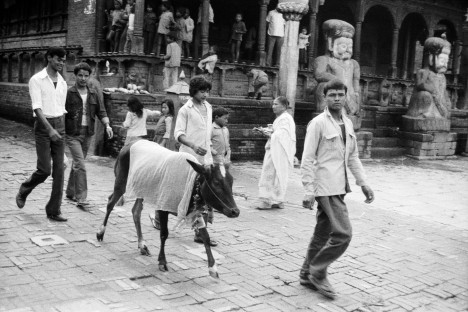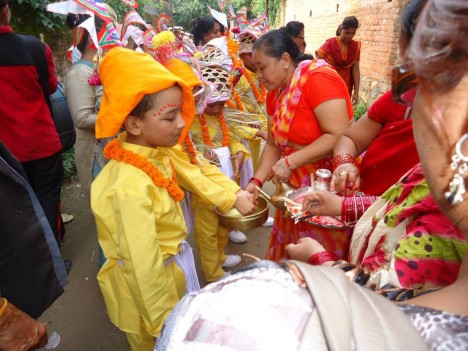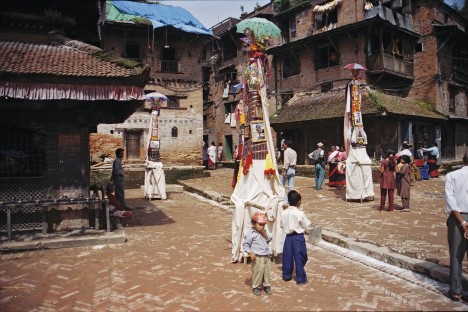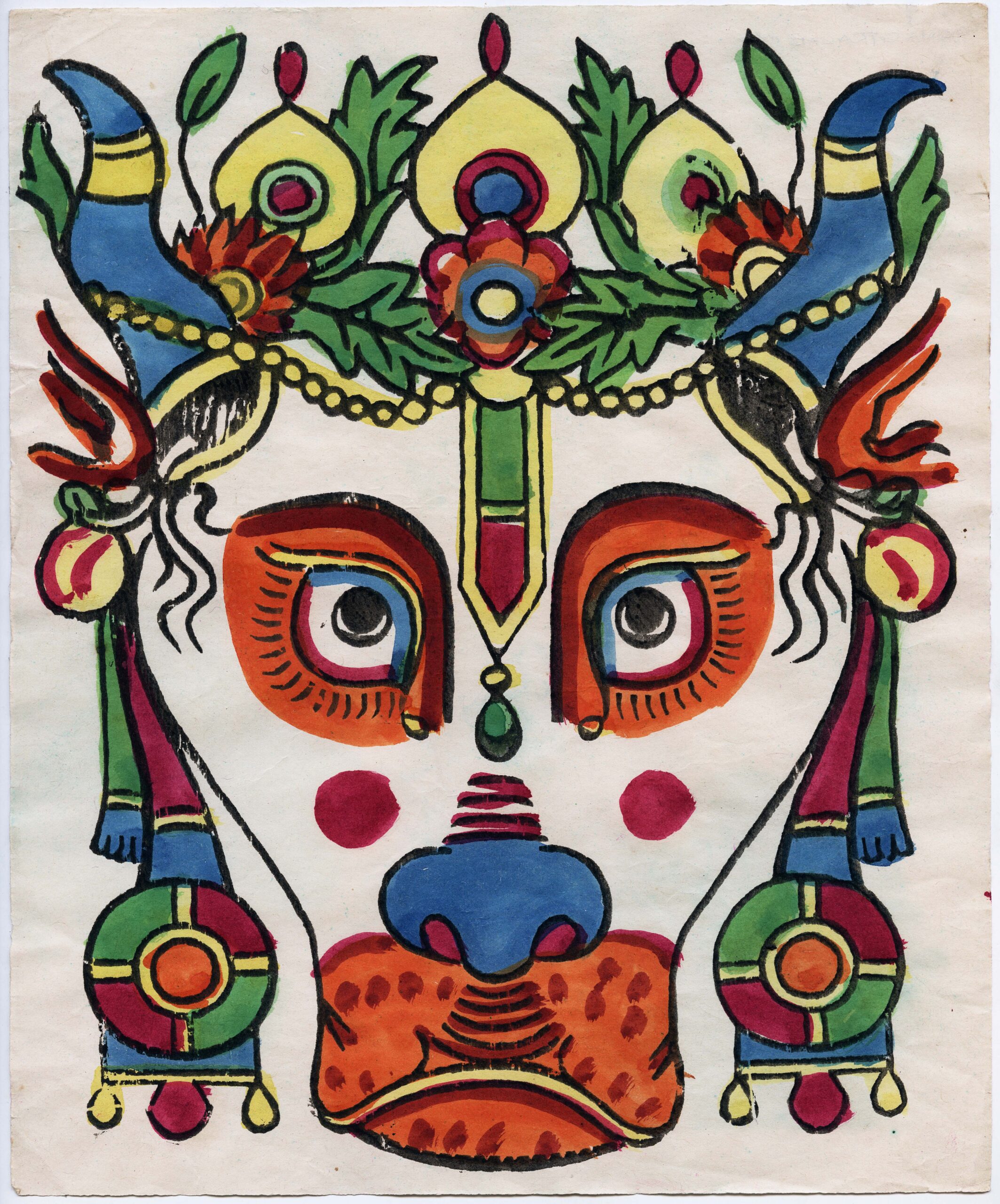
Saya, or Gai Jatra, is a joyous festival of the Kathmandu Valley that celebrates cows and the impending abundance of the harvest season. Jatra in the Nepali language means “street festival” making the celebration of Gai Jatra a public and community affair.
Like many of the other jatras celebrated throughout the year, Gai Jatra contains lively costumed street processions that move through the centers of the old cities of the Valley. It is celebrated during the middle of the monsoons when Newars replant their rice—this year occurring in late August. In addition to agrarian cycles, Gai Jatra also honors the dead. According to local beliefs, it is the one day that souls can enter into the world of the dead without having to go through the suffering of multiple rebirths. Cows actually help guide the soul of the deceased to heaven.
Honoring the dead: Cows as guides

Because cows are believed to guide souls, during Gai Jatra, anyone that has had a family member pass away is supposed to lead a calf during the procession. However since many families cannot afford a calf, most dress a child in a cow mask as a substitute, and these children walk in the procession instead. Newars will also create cow effigies out of bamboo to parade around.

Gai Jatra and the monsoon season

Despite the solemn theme, Gai Jatra is a grand celebration full of merrymaking and fun. After the procession has concluded, the rest of the day is filled with street performances of dances, plays, and comedic routines—making it an incredibly light-hearted affair. Decorations and costumes are an important part of the day. Like the art objects in our current exhibition, Nepalese Seasons,these decorative creations for Gai Jatra are largely influenced by the monsoon cycles. However, these creations are intended to be temporary and are remade every year for each new festival, so visitors won’t find any items made during Gai Jatra in the Museum
Connecting the festival to the end of the monsoons, some Newars will wear a sacred thread on their wrists that will then be removed during the Lakshmi festival about two months later. Once the Lakshmi festival comes, they will take the thread and tie it to a cow’s tail as a blessing.
Plan a visit to see Nepalese Seasons: Rain and Ritual and learn more about Nepalese culture and the monsoon season in the Kathmandu Valley.

